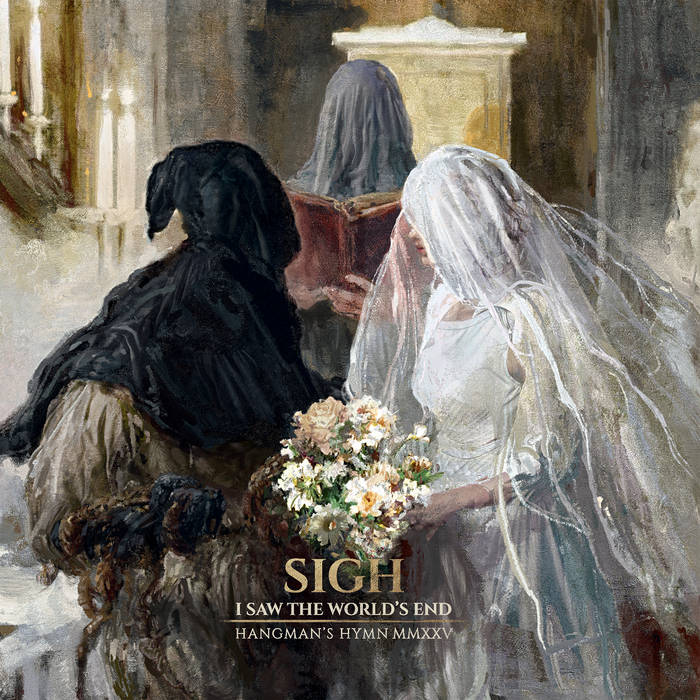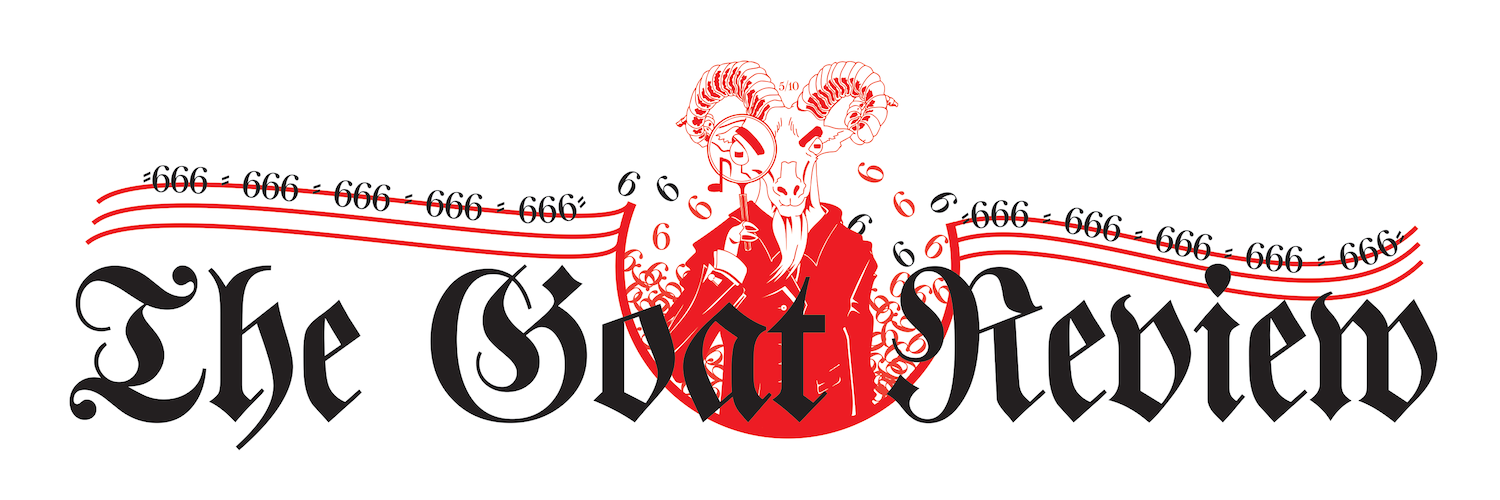
Ripping your face off with a blackened riff and thrashing drums, I Saw the World’s End opens, somehow, more intensely than Hangman’s Hymn did back in 2007. Making a good re-recording of a beloved album is apparently a concept so avant-garde that only a few bands ever manage it. Predictably, Sigh is a member of that select club. Much happened in the world of Sigh during the 2010’s and onwards. Mirai Kawashima‘s wife, Mika Kawashima, joined the band and brought some beastly growls and malevolent saxophone playing to the already eclectic mix of sounds the band had going. The following S-I-G-H album cycle is arguably the best work the band has done to date (yes Mirai, even Graveward), an impressive accomplishment for such a long-lived band. Hangman’s Hymn served as a sort of prototype sound for this era, mixing bombastic samples of classical music, black metal and a preference for thrashing faster than a certain blue video game mascot. Still, despite all of the great ideas contained in Hangman’s Hymn, it was never my favorite Sigh album. This is because of how incredibly loud the album is, and how indulgently theatrical it was. But if that isn’t enough for you, let me paraphrase Mirai himself from the press release of I Saw the World’s End: The drumming was monotonous, guitars sloppy, production was far from the best, and vocals and orchestration could be much better done. But as he also states in the same quote that re-recording something, despite its flaws, can be a double-edged sword if you can’t catch the same charm or magic the original recording has. A few questions present themselves, then: Are the performances better? Does the production change anything? Is there a point for returning fans to listen to this? Read on, and you too will see by the review’s end.
I always saw Scenes From Hell as a more complete work than Hangman’s Hymn as it converged all of the same elements of the new direction with better success. Up until In Somniphobia, Sigh albums always had production that sounded, let’s call it, charmingly lo-fi. In some cases, like Scenes From Hell, Scorn Defeat, and Gallow’s Gallery, it compounded with the compositions to make something more than sum of their parts. But in other cases, like Hail Horror Hail, it held the fantastic compositions back. Hangman’s Hymn stands out as the most unfortunate case since the overly loud production places its key focus on the orchestral element, and flattens out the rest into a buzzing mess. When listening to the album, it’s clear that it’s an inventive thrash album that uses its bombastic intensity to travel through its conceptual story at a frantic pace. It comes across as a orchestral album with 80’s thrash metal tying it all together. The dynamic production of I Saw the World’s End changes this into a blackened thrash metal-first album, where the orchestral element takes a supporting role and where contrasts steer the ship, surfacing ones from the original work and newly added ones alike. The overall impression sits closer to Scenes From Hell despite the clearer sound, and highlights just how much of an evolutionary step there is between the two albums. I Saw the World’s End is simultaneously a heavier, yet warmer, affair than Hangman’s Hymn. It sounds like a completely different album by changing the foundation the compositions stand on, and does this in several ways.

First, new guitarist Nozomu Wakai fills out the guitar playing in creative ways. Coming in with his experience from heavy/power metal bands Ashrain and Destinia, he adds great warmth to songs like “In Devil’s Arms”, that previously had the heavy/power metal influence lingering from Gallow’s Gallery drowned out by the flat production. That song now sounds like a blackened thrash version of Iron Maiden and has easily shot up among my favorite songs from the band. Session drummer Mike Heller (Malignancy, Black Hole Deity) throws himself into the thrash direction wholeheartedly and spits tasteful fills left and right, more than making up for the sterile direction of the original album. While the choral elements have been toned down, vocals are much more varied, with Mika Kawashima adding some dirty and much needed contrast to Mirai‘s rasped despair (listen to “Inked in Blood” for a great example of this). Lastly, as I already touched on the warm and dynamic production, the mix places all of the moving parts expertly so that nothing has to fight for space. Hangman’s Hymn being reborn as I Saw the World’s End places these compositions in the top rung of Sigh‘s body of work, and the album earns its place in the band’s discography as a separate thing from the original. It’s hard hitting, yet easy to listen to over and over again. More than that, the performances on this album impress me, and Wakai especially is a welcome addition to the Sigh sound. As there has been some significant shifts in the band’s lineup since In Somniphobia, I’ve felt that Sigh haven’t been as cohesive as a unit lately. With Shiki feeling like some tonal whiplash and a creative dead end after a swath of exploratory excellence in the last few albums, I’m glad and surprised to hear Sigh sounding so tight, so tuned in, and so absolutely vicious 35 years into their career. Here’s hoping we haven’t seen the end of this incarnation of Sigh just yet.
